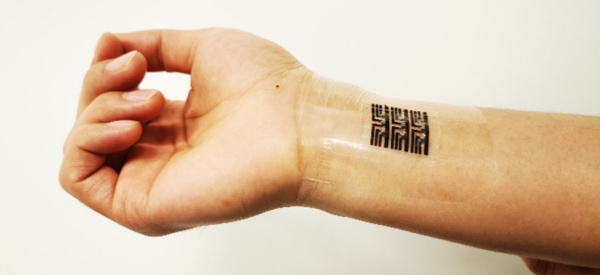
It acts like a brain and feels like skin. And unlike smartwatches, this flexible device doesn’t need to send the data that it collects to another device for analysis. Instead, this recently developed AI chip from researchers at the University of Chicago’s Pritzker School of Molecular Engineering (PME) can collect data — such as the wearer’s blood oxygen level, blood sugar level, and even immune molecules in blood — analyze, and store that data. All in real-time and in one tiny package that sits comfortably on the skin. In the future, this non-invasive device could provide in-depth health analysis that’s only possible today with a trip to a clinic or a hospital.
And it’s built like the human brain; unlike traditional chips, neuromorphic computing chips such as the one developed by PME researchers do computations with artificial neurons that mimic the human brain and the human nervous system. Much like the brain, these chips use neurons and synapses to transfer electrical signals, giving them the ability to process information rapidly with minimal energy use. That means that it consumes less power than most current wearables, with the added benefits of speed and privacy. PME’s Sihong Wang explains, “Sending health data wirelessly is slow and presents a number of privacy concerns. It is also incredibly energy inefficient; the more data we start collecting, the more energy these transmissions will start using.”
Wang and his team set out to test the chip’s ability to do electrocardiograms (ECGs), training the device to identify healthy ECGs as well as four different kinds of arrhythmias. They say that even when the wearable was bent or stretched, it accurately detected and classified different heartbeats. Though the team envisions the device’s use stretching far beyond ECGs. Wang says, “If you can get real-time information on blood pressure, for instance, this device could very intelligently make decisions about when to adjust the patient’s blood pressure medication levels.” Adding that some of today’s implantable insulin pumps already use this type of feedback loop.
While there’s still work to do on the device, it shows promise in taking baseline measurements of the wearer’s health and detecting signs of disease. And could be used for to automatically adjust medications or send alerts to clinicians and caregivers. Wang says, “With this work we’ve bridged wearable technology with artificial intelligence and machine learning to create a powerful device which can analyze health data right on our own bodies…Integration of artificial intelligence with wearable electronics is becoming a very active landscape…[but the chip is] just a starting point.”

